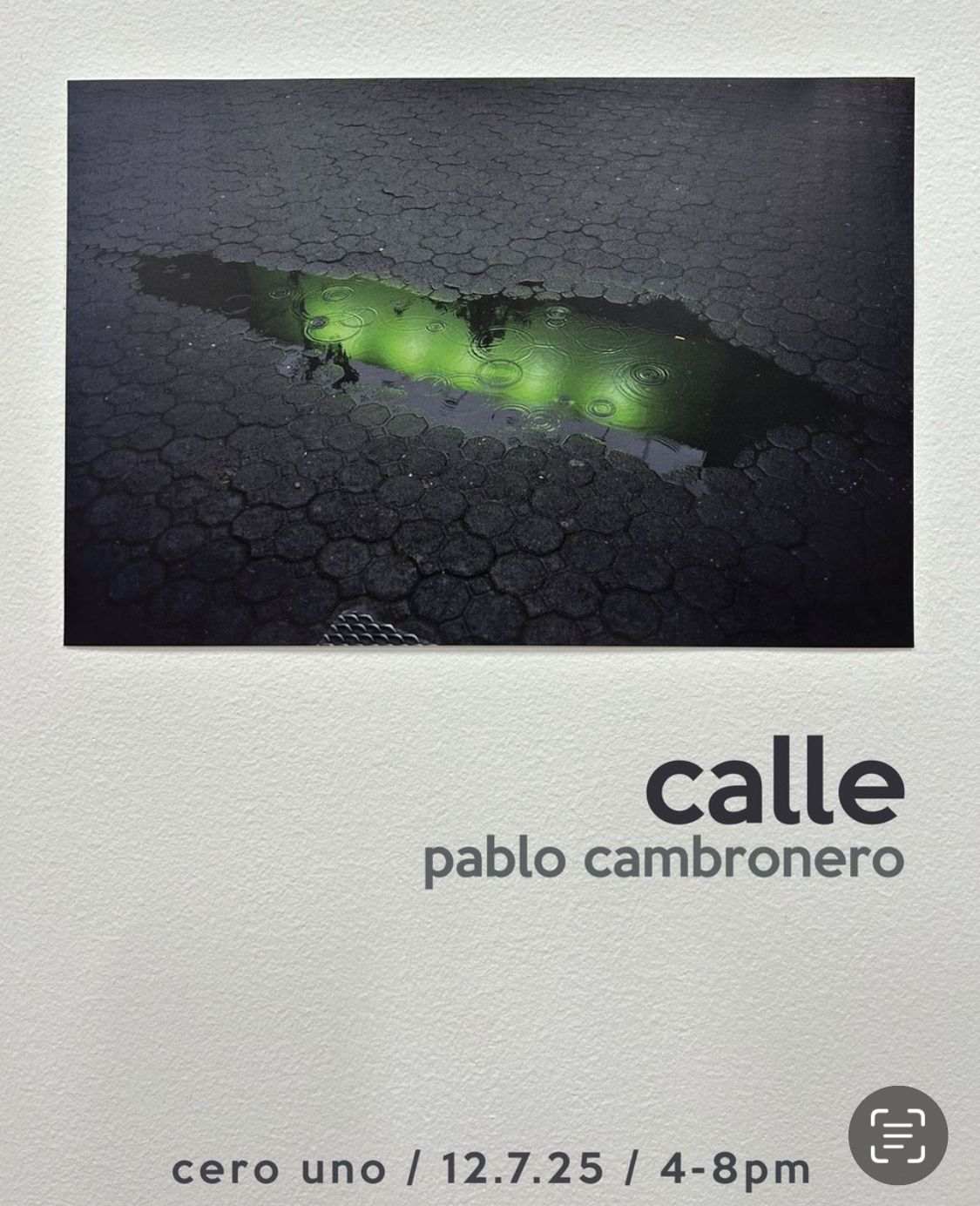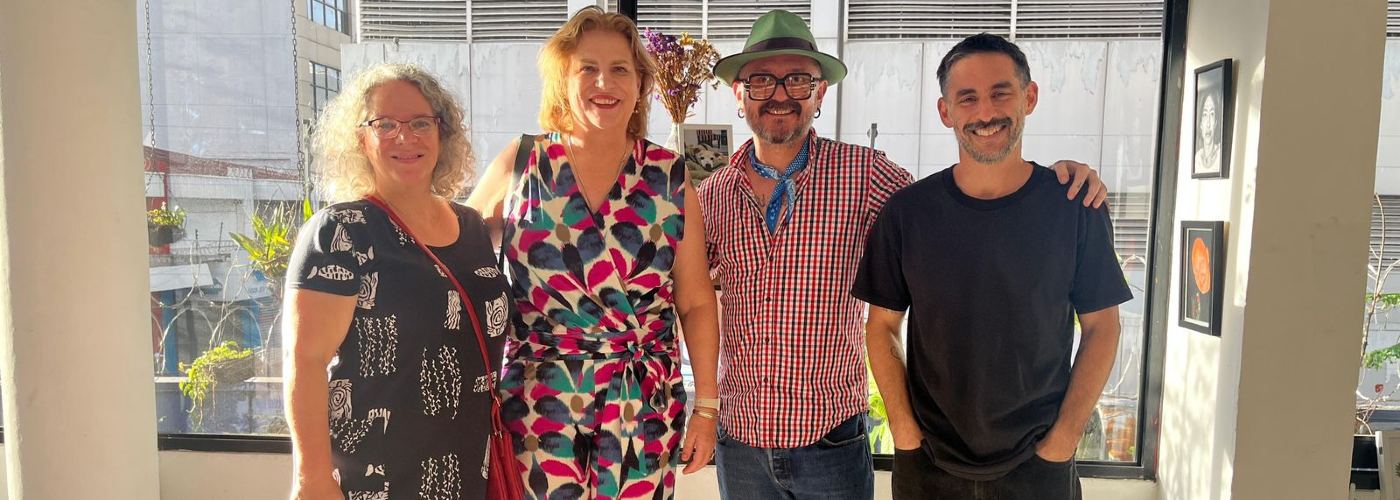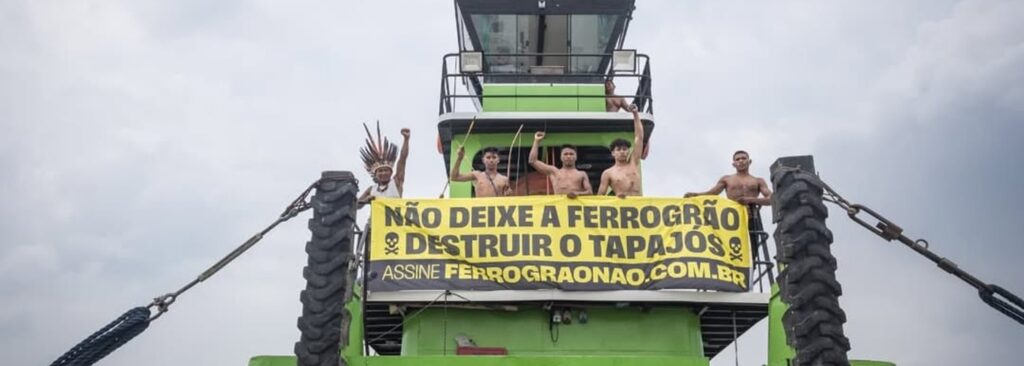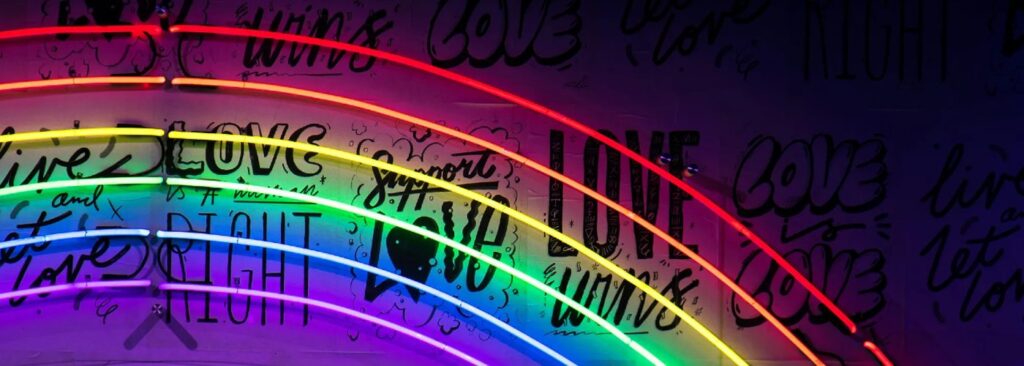Finding connection, purpose, and power in an art gallery in San José, Costa Rica
By Tanja Lubbers, Regional Director, Hivos Latin America
Recently, I was invited to visit a small art exhibit in downtown San José. I said yes, grateful for the distraction. Lately, my days have been filled with budget cuts and the crushing headlines from Gaza, Sudan, and Ukraine. I needed a break from despair …. and from screens. And I hoped art would lift my spirits somewhat.
A hidden gallery, a different San José
San José’s city center is not usually where I go to relax on a Sunday afternoon. Like many, I head to the green hills of Escazú or the country’s stunning beaches and forests. But this time I found myself at Cero Uno, a small gallery tucked between the ordinary and the overlooked.
After being welcomed by Alejandro, I wandered through the space, letting my guard down.
And there it was—art doing what it always does best: stopping me, opening me, showing me what I hadn’t seen.
Seeing the city, and myself, anew
Photographer Pablo Cambronero’s series “Calle” (Street) captured a San José I didn’t recognize. Full of color and character. Bars, brothels, corners, energy. So alive.
I’ve lived here for five years. But in all honesty, I’ve treated the city like a transit lounge, a base for Hivos’ work across Latin America. Yes, I’ve attended events here. I’ve visited Indigenous and Afro-Costa Rican communities. But have I really connected with people on the margins the way I did in other countries? Not really. Arriving during Covid made that hard. And so did the nonstop attacks on the very essence of our work: human rights, international solidarity, and climate justice.
But these photos showed me everything I had overlooked—a city is alive with the very people we say we work for. They are dancing, creating, struggling, surviving. And I had looked past them.

Art spaces as spaces for change
As the gallery filled, I noticed something else: this wasn’t a typical art crowd. Refugees, migrants, queer youth—people who don’t always find safe, visible spaces were here. I started chatting with the visitors. They told me that Cero Uno isn’t just a gallery. It’s a safe space. A community. A place where stories meet strategies.
“We’re working with LGBTQ+ folks, migrants, people from the margins,” they said. “We’re co-creating projects to raise awareness and build solidarity.” I thought aloud, “That’s exactly what we do at Hivos.” Alejandro lit up. “You work for Hivos? We wouldn’t be here without you.”
He told me how Hivos had supported Teorética, a legendary gallery where they learned everything. “You built the bridges—to ideas, to people, to the world. We learned that art could open minds, shift narratives, build dignity. And we’ve carried that forward.”
Art is not a luxury, it’s a tool for justice
As I listened, I remembered my early days at Hivos, when I led our global arts and culture work from The Hague. We knew then what we must remember now: art is not decoration. It’s a driver of human rights. It’s part of the solution. Art challenges power. It tells stories that reports cannot. It brings people together when politics pushes them apart. It creates safe spaces in dangerous environments. It makes us feel even when we’ve gone numb.
Later, in Harare, I saw it at Book Café, where music and poetry sparked democratic conversations in a repressive society. Then in Bolivia, through networks of Indigenous and Afro artists demanding inclusion. And in São Paulo at Nave Coletiva, where queerness, resistance, and joy coexist on the dance floor. In all these places, art was never secondary to activism. It was central to it.
Why we must stop talking only to ourselves
As human rights activists, development workers, and donors, we often fall into a trap: talking only to each other. Using technical language. Producing reports no one reads. But the people we aim to serve—people on the frontlines of inequality and exclusion—don’t need our PDFs. They need spaces. Visibility. Connection. That’s what art offers. That’s what creative spaces like Cero Uno give them. We cannot focus only on the brain and “measurable results” and ignore the heart, body, and soul.
A closing reflection
That Sunday afternoon reminded me of something essential. If we truly want to support justice and inclusion, we must reconnect with the cultural spaces where people imagine and build better worlds.
Art is not a luxury. It is how people survive, resist, and hope. It’s how communities hold on to dignity when everything else is under pressure. It’s where human rights live.
Pictured above are – from left to right: Ioanna Sahas Martin (Ambassador of Canada to Costa Rica), Tanja Lubbers, Alejandro from Cero Uno and photographer Pablo Cambronero




